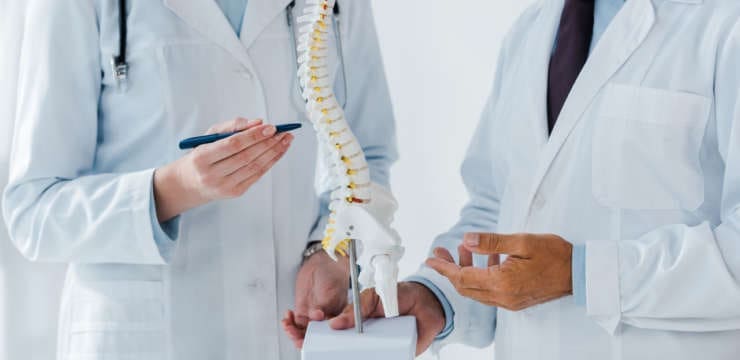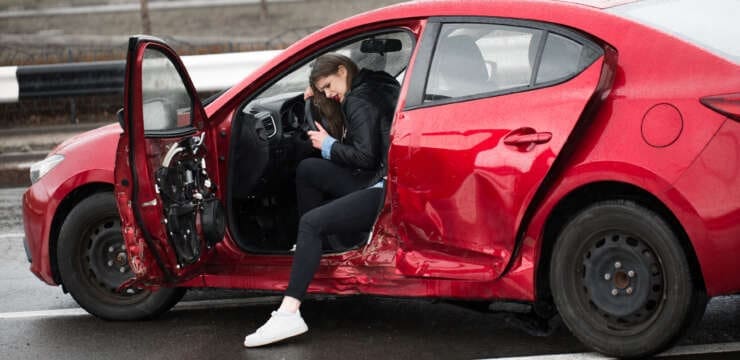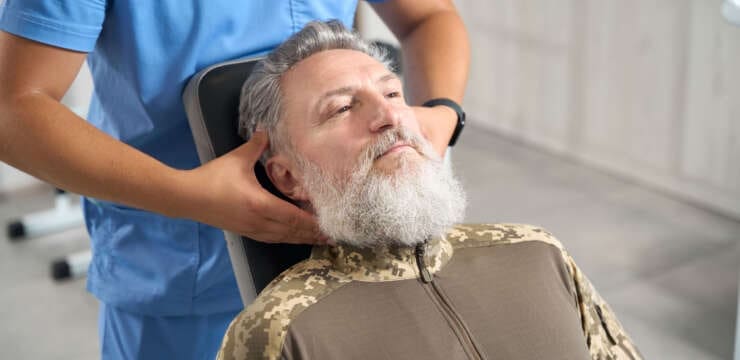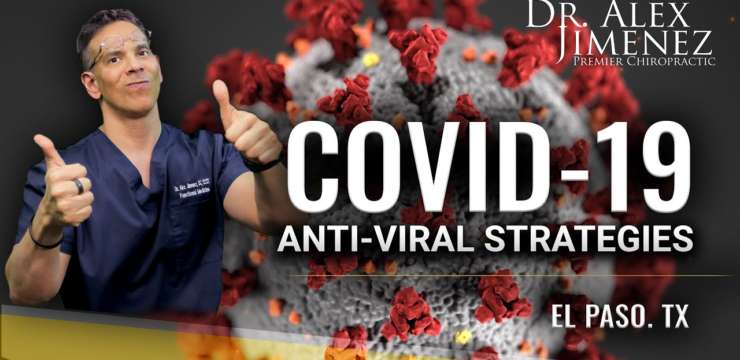
Avoid spinal injuries by following crucial safety tips. Stay informed and keep your spine healthy on the road.
Table of Contents
Reducing Auto Injuries: Clinical Insights and Seatbelt Benefits
Introduction
Motor vehicle accidents (MVAs) are a significant public health concern, causing millions of injuries and deaths worldwide each year. According to the World Health Organization, approximately 1.19 million people die annually in road traffic crashes, with 20-50 million more suffering non-fatal injuries, many leading to disabilities (WHO). In the United States, the National Highway Traffic Safety Administration (NHTSA) reported that in 2022, over 2.6 million emergency department visits were attributed to motor vehicle accident (MVA)- related injuries (NHTSA). These statistics highlight the urgent need for effective prevention strategies.
One of the most impactful ways to reduce the severity of injuries in MVAs is by wearing a seatbelt. Research indicates that seatbelts reduce the risk of death by about 45% for front-seat passengers and 60% for those in the back seat (CDC). Despite this, many individuals fail to buckle up, increasing their risk of severe injury or death. This comprehensive blog post explores the clinical rationale for seatbelt use, the role of auto injuries in cervical pain, and the expertise of Dr. Alexander Jimenez, a distinguished chiropractor and functional medicine practitioner in El Paso, Texas. With a touch of humor inspired by Herman Munster from The Munsters, we’ll keep the tone engaging while delivering critical information. Picture Herman, with his towering frame and goofy grin, buckling up before cruising in his hot rod—because even a monster knows safety is no laughing matter!
References
- World Health Organization. (2023). Road traffic injuries. www.who.int/news-room/fact-sheets/detail/road-traffic-injuries
- National Highway Traffic Safety Administration. (2024). Seat belts. www.nhtsa.gov/vehicle-safety/seat-belts
- Centers for Disease Control and Prevention. (2023). Seat belt safety. www.cdc.gov/seat-belts/facts/index.html
Understanding Auto Injuries
Motor vehicle accidents can result in a wide array of injuries, ranging from minor bruises to life-altering conditions. The type and severity of injuries depend on factors such as the speed of the collision, the angle of impact, and whether seatbelts restrained occupants. Below, we outline the most common injuries associated with MVAs, with a focus on spinal injuries, particularly those affecting the cervical spine.
Common Types of Auto Injuries
- Soft Tissue Injuries: These include sprains, strains, and whiplash, which affect muscles, ligaments, and tendons. Whiplash, a prevalent injury in MVAs, occurs when the neck undergoes rapid forward and backward motion, causing pain and stiffness (Mayo Clinic).
- Fractures: Broken bones, such as those in the limbs, ribs, or spine, are common in high-impact crashes. Cervical vertebrae fractures can be particularly severe, potentially affecting nerve function (Grigory Goldberg, MD).
- Head Injuries: These range from concussions to traumatic brain injuries, often caused by the head striking the steering wheel, dashboard, or window (Novus Spine & Pain Center).
- Internal Injuries: High-speed collisions can damage organs like the liver, spleen, or kidneys, especially if seatbelts are not worn (StatPearls).
- Bruises and Lacerations: Impact with vehicle interiors or debris can cause contusions and cuts, which may require medical attention if severe (Forbes Advisor).
Spinal Injuries in MVAs
Spinal injuries are among the most serious outcomes of MVAs, with the National Spinal Cord Injury Statistical Center noting that MVAs accounted for 38% of spinal cord injuries in the U.S. between 2010 and 2013 (StatPearls). These injuries can affect the cervical (neck), thoracic (mid-back), or lumbar (lower back) regions of the spine. The cervical spine is particularly vulnerable due to its mobility and exposure during crashes.
- Whiplash: The most common cervical spine injury, whiplash affects over 80,000 individuals annually in the U.S. (Integrity Spine & Orthopedics). It results from the rapid motion of the neck, straining the soft tissues and potentially causing long-term pain.
- Cervical Fractures and Dislocations: These occur when the vertebrae break or shift due to abrupt impact, potentially damaging the spinal cord and nerves (Spine Diagnostic).
- Herniated Discs: The force of a crash can cause intervertebral discs to bulge or rupture, pressing on nerves and causing pain or numbness (MG Law).
- Spinal Cord Injuries: Severe impacts can damage the spinal cord, leading to partial or complete paralysis, such as quadriplegia if the cervical spine is affected (Michigan Auto Law).
Role of Seatbelts in Injury Prevention
Seatbelts are critical in reducing the severity of these injuries. By securing occupants, they prevent ejection from the vehicle and minimize contact with hard surfaces. However, seatbelts can contribute to minor injuries, such as bruises or abrasions, known as “seatbelt syndrome.” Despite this, the protective benefits of seatbelts far outweigh these risks, as unbelted occupants face a higher likelihood of severe spinal injuries or death (NHTSA).
References
- Mayo Clinic. (2024). Whiplash. www.mayoclinic.org/diseases-conditions/whiplash/symptoms-causes/syc-20378921
- National Institute of Neurological Disorders and Stroke. (2023). Spinal cord injury. www.ninds.nih.gov/health-information/disorders/spinal-cord-injury
- StatPearls. (2023). Motor vehicle collisions. www.ncbi.nlm.nih.gov/books/NBK441955/
- Integrity Spine & Orthopedics. (2024). What neck injuries do car accidents cause? www.integrityspineortho.com/post/what-neck-injuries-do-car-accidents-cause/
- Grigory Goldberg, MD. (2024). Common spinal injuries from car accidents. newjerseyspinespecialist.com/spinal-injuries-from-car-accidents/
- Novus Spine & Pain Center. (2025). Motor vehicle injuries & types of pain. novusspinecenter.com/pain-conditions/motor-vehicle-injuries-types-pain-following-accident
- Forbes Advisor. (2023). 15 common car crash injuries. www.forbes.com/advisor/legal/auto-accident/car-crash-injuries/
- MG Law. (2024). 7 common spine injuries from car accidents. www.mg4law.com/common-spine-injuries-from-car-accidents/
- Michigan Auto Law. (2023). Spine injury from car accident. www.michiganautolaw.com/blog/2023/03/08/spine-injury-from-car-accident/
- Spine Diagnostic. (2022). Most common cervical spine injuries. spinediagnostic.com/most-common-cervical-spine-injuries/
The Science Behind Seatbelts
Seatbelts are a cornerstone of vehicle safety, designed to protect occupants by managing the forces experienced during a crash. Understanding their mechanics and effectiveness provides insight into their critical role in injury prevention.
How Seatbelts Work
Seatbelts function by distributing crash forces across the body’s stronger areas, such as the pelvis and rib cage, rather than allowing vulnerable parts like the head or neck to absorb the impact. In a collision, the seatbelt restrains the occupant, preventing them from hitting the steering wheel, dashboard, or windshield. The three-point seatbelt, standard in most modern vehicles, combines a lap belt and a shoulder belt to secure both the lower and upper body, reducing movement during a crash (NHTSA).
Effectiveness of Seatbelts
Research indicates that seatbelts reduce the risk of fatal injury by 45% for front-seat passengers and 60% for rear-seat passengers (CDC). From 1975 to 2017, seatbelts saved an estimated 374,276 lives in the U.S. alone (National Safety Council). In 2023, seatbelt use reached 91.9%, reflecting the widespread adoption of this safety measure due to its proven effectiveness.
Types of Seatbelts
- Lap Belts: Early seatbelts that secured only the pelvis, associated with flexion-distraction injuries in older vehicles.
- Three-Point Belts: Modern standard, combining lap and shoulder belts for optimal protection.
- Seatbelt Interlocks: Advanced systems that prevent vehicle operation if seatbelts are not worn, increasing compliance (IIHS).
Seatbelt-Related Injuries
While seatbelts are lifesaving, they can cause minor injuries, such as bruising or abrasions across the chest and abdomen, commonly referred to as “seatbelt syndrome.” These are less severe than injuries sustained without seatbelts, such as ejection or severe spinal fractures (StatPearls). Proper seatbelt use—positioning the lap belt across the hips and the shoulder belt across the chest—minimizes these risks (NHTSA).
Seatbelts and Cervical Spine Injuries
Seatbelts reduce the risk of severe cervical spine injuries by stabilizing the body, but they may contribute to whiplash in rear-end collisions due to the head’s free movement. Advanced vehicle features, like whiplash protection seats, help mitigate this risk (Kaizo Health).
References
- National Highway Traffic Safety Administration. (2024). Seat belts. www.nhtsa.gov/vehicle-safety/seat-belts
- National Safety Council. (n.d.). Seat belts. injuryfacts.nsc.org/motor-vehicle/occupant-protection/seat-belts/
- Insurance Institute for Highway Safety. (2024). Seat belts. www.iihs.org/research-areas/seat-belts
- StatPearls. (2025). Seat belt injury. www.ncbi.nlm.nih.gov/books/NBK470262/
- Kaizo Health. (2022). What is whiplash? www.kaizo-health.com/what-is-whiplash-how-seat-belt-injuries-can-affect-the-neck-and-spine/
The Road To Recovery- Video
Cervical Pain and Auto Injuries
Cervical spine injuries, particularly whiplash, are among the most common outcomes of MVAs, significantly impacting victims’ quality of life if untreated.
Anatomy of the Cervical Spine
The cervical spine consists of seven vertebrae (C1-C7) in the neck, which support the head and protect the spinal cord. Intervertebral discs act as shock absorbers, while facet joints allow head movement. This complex structure is vulnerable to trauma from MVAs (Alexander Orthopaedics).
Whiplash and Its Symptoms
Whiplash, affecting over 80,000 people annually in the U.S., results from rapid neck motion during crashes, causing soft tissue strain. Symptoms include:
- Neck pain and stiffness
- Headaches, often at the skull base
- Dizziness and fatigue
- Cognitive issues, like difficulty concentrating
- Tinnitus, sleep disturbances, or mood changes
Chronic whiplash can lead to persistent pain and reduced mobility if not addressed promptly (Integrity Spine & Orthopedics).
Other Cervical Injuries
- Cervical Fractures: Breaks in the cervical vertebrae, which may pinch nerves, causing pain or tingling (Grigory Goldberg, MD).
- Spinal Stenosis: Trauma-induced narrowing of the spinal canal, leading to radiating pain (Grigory Goldberg, MD).
- Spinal Cord Injuries: Severe cases can cause quadriplegia, affecting movement and sensation below the neck (Michigan Auto Law).
Seatbelts and Cervical Injury Prevention
Seatbelts reduce the risk of severe cervical injuries by limiting body movement during crashes. However, they may contribute to whiplash in rear-end collisions as the head moves freely while the body is restrained. Proper seatbelt positioning and vehicle features, such as active headrests, can further reduce the risk of whiplash (Kaizo Health). Herman Munster might say, “Buckle up tight, or your neck might take flight!”
References
- Alexander Orthopaedics. (2024). Common neck injuries from a car accident. alexanderorthopaedics.com/blog/common-neck-injuries-from-a-car-accident/
- Integrity Spine & Orthopedics. (2024). What neck injuries do car accidents cause? www.integrityspineortho.com/post/what-neck-injuries-do-car-accidents-cause/
- Grigory Goldberg, MD. (2024). Common spinal injuries from car accidents. newjerseyspinespecialist.com/spinal-injuries-from-car-accidents/
- Michigan Auto Law. (2023). Spine injury from car accident. www.michiganautolaw.com/blog/2023/03/08/spine-injury-from-car-accident/
- Kaizo Health. (2022). What is whiplash? www.kaizo-health.com/what-is-whiplash-how-seat-belt-injuries-can-affect-the-neck-and-spine/
Clinical Insights from Dr. Alexander Jimenez
Dr. Alexander Jimenez, a chiropractor and functional medicine practitioner in El Paso, Texas, brings over 30 years of experience to treating MVA-related injuries. His approach emphasizes natural healing, avoiding drugs or invasive procedures (LinkedIn).
Diagnostic and Treatment Methods
Dr. Jimenez utilizes advanced imaging techniques (e.g., X-rays, MRIs) and diagnostic evaluations to assess the extent of injuries. His treatments include:
- Chiropractic Adjustments: To restore spinal alignment and reduce pain.
- Functional Medicine: Addressing the underlying causes of pain and inflammation.
- Nutritional Therapy: Supporting recovery with tailored nutrition plans.
- Rehabilitation: Exercises to restore mobility and strength (Health Coach Clinic).
Legal Liaison Role
Dr. Jimenez’s detailed diagnostics provide critical documentation for personal injury cases, bridging the gap between medical care and legal needs. His reports help attorneys build strong cases for MVA victims, ensuring that they receive fair compensation.
Community Impact
As a top-rated El Paso chiropractor (2015-2024), Dr. Jimenez supports veterans through the Tri-West Program and educates patients via webinars and blogs (LinkedIn). His holistic approach is like Herman Munster’s big heart—gentle yet effective!
References
- Health Coach Clinic. (n.d.). Southwest Functional Medicine. healthcoach.clinic/
- LinkedIn. (n.d.). Dr. Alexander Jimenez’s professional profile. www.linkedin.com/in/dralexjimenez/
Personal Injury Cases in El Paso
Personal injury cases in El Paso are critical for MVA victims seeking compensation for medical costs, lost wages, and pain. Prompt medical evaluation is essential for both recovery and legal documentation.
Importance of Medical Attention
Immediate care after an MVA prevents complications and strengthens legal claims. Dr. Jimenez’s expertise ensures thorough injury assessments, supporting both health and legal outcomes.
Dr. Jimenez’s Role
Dr. Jimenez’s clinic provides comprehensive care, from diagnostics to rehabilitation, while his detailed reports aid attorneys in securing fair settlements. His work is a lifeline for victims of MVA in El Paso.
Community Significance
El Paso’s high MVA rates make expert care vital. Dr. Jimenez’s reputation and veteran support enhance his community impact (LinkedIn).
References
- Health Coach Clinic. (n.d.). Southwest Functional Medicine. healthcoach.clinic/
- LinkedIn. (n.d.). Dr. Alexander Jimenez’s professional profile. www.linkedin.com/in/dralexjimenez/
Preventive Measures Beyond Seatbelts
While seatbelts are paramount, other measures enhance MVA safety:
- Airbags Work in Conjunction with seatbelts to reduce impact injuries (NHTSA).
- Safe Driving: Avoiding distractions and obeying traffic laws lowers crash risks.
- Vehicle Maintenance: Regular checks ensure safety features function properly.
- Advanced Safety Features: Features such as automatic braking and lane assist help prevent collisions (IIHS).
References
- National Highway Traffic Safety Administration. (2024). Seat belts. www.nhtsa.gov/vehicle-safety/seat-belts
- Insurance Institute for Highway Safety. (2024). Seat belts. www.iihs.org/research-areas/seat-belts
Conclusion
Seatbelts are a proven, life-saving tool, reducing MVA-related injury severity, including cervical spine issues like whiplash. Dr. Alexander Jimenez’s expertise in El Paso enhances recovery and supports personal injury cases through advanced diagnostics and natural treatments. Serious Note: Auto injuries can have profound, lasting effects; immediate medical attention is critical. Disclaimer: This post is for informational purposes only and not a substitute for professional medical or legal advice.
Key Citations
- World Health Organization: Road traffic injuries fact sheet (www.who.int/news-room/fact-sheets/detail/road-traffic-injuries)
- National Highway Traffic Safety Administration: Seat belt safety information (www.nhtsa.gov/vehicle-safety/seat-belts)
- Centers for Disease Control and Prevention: Seat belt facts and statistics (www.cdc.gov/seat-belts/facts/index.html)
- National Safety Council: Seat belt usage and effectiveness (injuryfacts.nsc.org/motor-vehicle/occupant-protection/seat-belts/)
- Insurance Institute for Highway Safety: Seat belt research and data (www.iihs.org/research-areas/seat-belts)
- Mayo Clinic: Whiplash symptoms and causes (www.mayoclinic.org/diseases-conditions/whiplash/symptoms-causes/syc-20378921)
- National Institute of Neurological Disorders and Stroke: Spinal cord injury information (www.ninds.nih.gov/health-information/disorders/spinal-cord-injury)
- StatPearls: Motor vehicle collisions overview (www.ncbi.nlm.nih.gov/books/NBK441955/)
- Integrity Spine & Orthopedics: Neck injuries from car accidents (www.integrityspineortho.com/post/what-neck-injuries-do-car-accidents-cause/)
- Grigory Goldberg, MD: Common spinal injuries from car accidents (newjerseyspinespecialist.com/spinal-injuries-from-car-accidents/)
- Novus Spine & Pain Center: Motor vehicle injuries and pain types (novusspinecenter.com/pain-conditions/motor-vehicle-injuries-types-pain-following-accident)
- Forbes Advisor: Common car crash injuries (www.forbes.com/advisor/legal/auto-accident/car-crash-injuries/)
- MG Law: Seven common spine injuries from car accidents (www.mg4law.com/common-spine-injuries-from-car-accidents/)
- Michigan Auto Law: Spine injury from car accidents (www.michiganautolaw.com/blog/2023/03/08/spine-injury-from-car-accident/)
- Spine Diagnostic: Most common cervical spine injuries (spinediagnostic.com/most-common-cervical-spine-injuries/)
- Kaizo Health: Whiplash and seat belt injuries (www.kaizo-health.com/what-is-whiplash-how-seat-belt-injuries-can-affect-the-neck-and-spine/)
- Alexander Orthopaedics: Common neck injuries from car accidents (alexanderorthopaedics.com/blog/common-neck-injuries-from-a-car-accident/)
- Health Coach Clinic: Southwest Functional Medicine overview (healthcoach.clinic/)
- LinkedIn: Dr. Alexander Jimenez’s professional profile (www.linkedin.com/in/dralexjimenez/)
Disclaimers
Professional Scope of Practice *
The information herein on "Auto Injuries and Recovery Methods for Spinal Prevention" is not intended to replace a one-on-one relationship with a qualified health care professional or licensed physician and is not medical advice. We encourage you to make healthcare decisions based on your research and partnership with a qualified healthcare professional.
Blog Information & Scope Discussions
Welcome to El Paso's wellness blog, where Dr. Alex Jimenez, DC, FNP-C, a board-certified Family Practice Nurse Practitioner (FNP-C) and Chiropractor (DC), presents insights on how our team is dedicated to holistic healing and personalized care. Our practice aligns with evidence-based treatment protocols inspired by integrative medicine principles, similar to those found on dralexjimenez.com, focusing on restoring health naturally for patients of all ages.
Our areas of chiropractic practice include Wellness & Nutrition, Chronic Pain, Personal Injury, Auto Accident Care, Work Injuries, Back Injury, Low Back Pain, Neck Pain, Migraine Headaches, Sports Injuries, Severe Sciatica, Scoliosis, Complex Herniated Discs, Fibromyalgia, Chronic Pain, Complex Injuries, Stress Management, Functional Medicine Treatments, and in-scope care protocols.
Our information scope is limited to chiropractic, musculoskeletal, physical medicine, wellness, contributing etiological viscerosomatic disturbances within clinical presentations, associated somato-visceral reflex clinical dynamics, subluxation complexes, sensitive health issues, and functional medicine articles, topics, and discussions.
We provide and present clinical collaboration with specialists from various disciplines. Each specialist is governed by their professional scope of practice and their jurisdiction of licensure. We use functional health & wellness protocols to treat and support care for the injuries or disorders of the musculoskeletal system.
Our videos, posts, topics, subjects, and insights cover clinical matters, issues, and topics that relate to and directly or indirectly support our clinical scope of practice.*
Our office has reasonably attempted to provide supportive citations and has identified the relevant research studies or studies supporting our posts. We provide copies of supporting research studies available to regulatory boards and the public upon request.
We understand that we cover matters that require an additional explanation of how they may assist in a particular care plan or treatment protocol; therefore, to discuss the subject matter above further, please feel free to ask Dr. Alex Jimenez, DC, APRN, FNP-BC, or contact us at 915-850-0900.
We are here to help you and your family.
Blessings
Dr. Alex Jimenez DC, MSACP, APRN, FNP-BC*, CCST, IFMCP, CFMP, ATN
email: coach@elpasofunctionalmedicine.com
Licensed as a Doctor of Chiropractic (DC) in Texas & New Mexico*
Texas DC License # TX5807
New Mexico DC License # NM-DC2182
Licensed as a Registered Nurse (RN*) in Texas & Multistate
Texas RN License # 1191402
ANCC FNP-BC: Board Certified Nurse Practitioner*
Compact Status: Multi-State License: Authorized to Practice in 40 States*
Graduate with Honors: ICHS: MSN-FNP (Family Nurse Practitioner Program)
Degree Granted. Master's in Family Practice MSN Diploma (Cum Laude)
Dr. Alex Jimenez, DC, APRN, FNP-BC*, CFMP, IFMCP, ATN, CCST
My Digital Business Card






